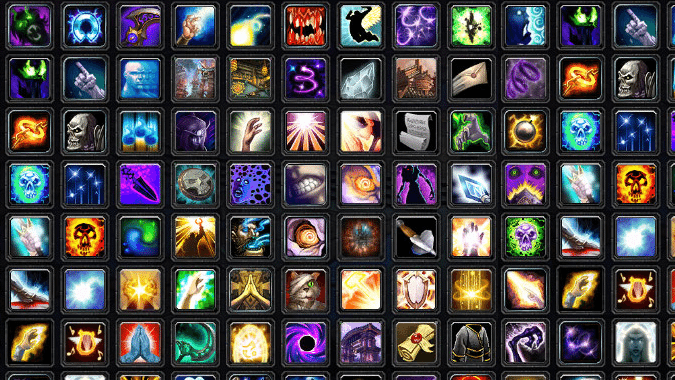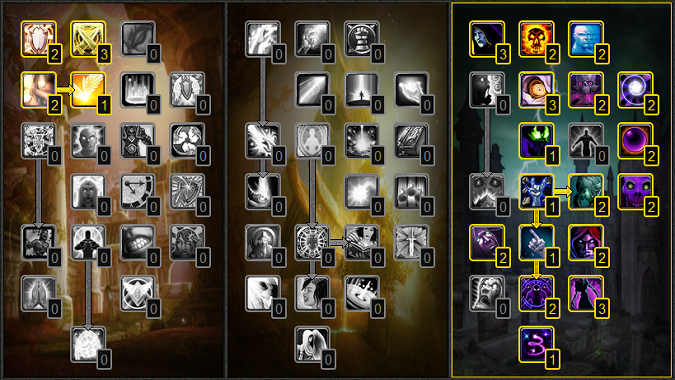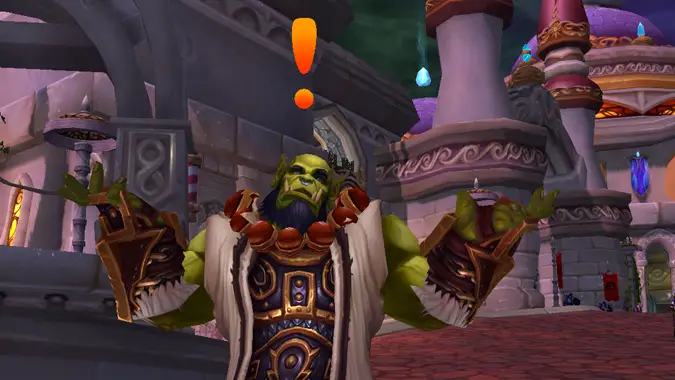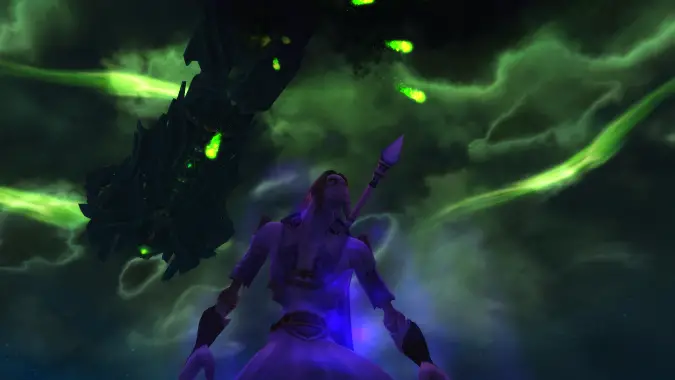Class utility changes in Battle for Azeroth pose a hurdle for WoW’s class devs

One of the big questions that comes with every new World of Warcraft expansion is what’s going to happen to your favorite class and/or spec. Expansions typically come with the expectation of major revamps — some more major than others — and Legion was an even more extreme case than most. Now, with Battle for Azeroth, we’ve already seen a bit of a shift in design philosophy with the return of class buffs.
However, in the grand scheme of things, class buffs are a relatively small change compared to those we’ve seen in previous expansions. And given several of the interviews to come out of BlizzCon 2017, it seems as though Battle for Azeroth will be focused on those small changes rather than the big ones. In an interview with Anniefuschia, a World of Warcraft streamer, Systems Designer Jay Gill discussed what changes we will be seeing, and talked a little more in-depth about class buffs and utility.
[advanced_iframe securitykey=”c14fb2ba33b8b63a7242c95b45f7286ac1cf3e27″ src=”https://player.twitch.tv/?autoplay=false&video=v187671376″ width=”100%” height=”600″]
Class buffs: what’s changing and what’s staying the same?
The biggest change when it comes to class buffs is which classes will have what effects, and how those will overlap. Namely, the current plan is to actually have a unique buff effect for each class. Yes, rather than having Stamina provided by, say Priests and Warlocks, only Priests will be able to give Stamina, while Warlocks will actually debuff enemy targets so they take 5% increased magic damage.
As of right now, these are the buffs and debuffs that each class will have come Battle for Azeroth, courtesy of Wowhead — note that in most cases, party and raid buffs last for one hour:
- Death Knight: Leech increased by 5% for all party and raid members.
- Demon Hunter: Haste increased by 5% for all party and raid members.
- Druid: Versatility increased by 3% for all party and raid members.
- Hunter: Movement speed increased by 15% for all party and raid members.
- Mage: Intellect increased by 5% for all party and raid members.
- Monk: Mastery increased by 54 for all party and raid members.
- Paladin: Armor increased by 10% for all party and raid members.
- Priest: Stamina increased by 10% for all party and raid members.
- Rogue: Combo-point generators cause the target to take 5% increased Physical damage.
- Shaman: ¯_(ツ)_/¯
- Warlock: Causes the target to take 5% increased Magical damage for 1 minute.
- Warrior: Strength or Agility increased by 5% for all party and raid members.
See what I mean? There’s something for everyone! Well, except Shamans… but they’ll get something eventually. Probably. Maybe not.
The thing is, this is all in flux. In the interview with AnnieFuschia, the example is given of what happens when a Warlock dies versus what happens when a Mage dies. The Warlock has to apply a 1-minute debuff, which means their death causes you to lose that effect. The Mage? Their buff stays on the rest of the raid.
On top of that, Jay Gill mentioned that the idea of every class having a buff or debuff could change at some point. In other words, we may find at some point that Shamans don’t gain a buff, but Warlocks or Rogues lose their debuffs. Although, personally, I like the idea of every class having something, so I’d prefer any changes made be in regards to how long a debuff lasts on a target rather than the outright removal of a class’s utility.
Of course, all this probably has you wondering what these buffs mean for the whole “bring the player, not the class” mantra that first came onto the scene during Wrath of the Lich King. Well, AnnieFuschia’s interview covered that, too.

Class utility is the big focus this time around
The other big thing the interview covers is utility — not just in the way of class buffs, but in abilities and areas of expertise such as Hibernate or a specialization in multi-target fights, respectively. From the sounds of it, the goal is for runs — especially dungeon runs — to feel different based on what composition of classes players bring. If it sounds like this is an opposite design from that of the existing one, that’s because it is — the class team is toying with the idea of using utility changes to remove a bit of the homogeneity that’s become prominent over the past few expansions.
This does, however, bring into question whether or not dungeons, especially high-level Mythic+ ones, will have an “ideal” composition that leaves some classes out more than others. This sort of situation — albeit with raiding, back in Burning Crusade — is exactly what led to more homogenization in the first place. It was essentially considered impossible to complete the Sunwell raid without “raid stacking,” which is a fancy way of saying “bringing a very specific composition of classes.”
Granted, there’s likely going to always be some degree of min/maxing for the highest-level players, but with an extra emphasis on utility, there are a couple design decisions Blizzard will have to be careful around. Should they design each dungeon to have a specific number of areas that are easier to clear with a corresponding class, thus providing every class with at least one area they’ll help with over others? Should they focus more on having Mythic+ Affixes that emphasize one class over another, thus rotating the “best” composition on a weekly basis? Or is there another approach to take with the whole thing?
In a way, it reminds me of the specific buffs that different professions can supply in the Court of Stars dungeon. The first time I saw that Blizzard was okay making compositions with certain professions have an advantage on a given week, I was honestly a bit surprised. But I’ve also never found it to be a deal-breaker when it comes to actually running the place.

Must be a Shaman thing.
Larger class changes, if any, will occur with patch releases
While we’ve already been told not to expect major class overhauls in Battle for Azeroth on the scale of the ones that came with Legion, AnnieFuschia’s interview does touch on the topic of how the changes we do see will be implemented. Gill compares the changes planned for Battle as on the same scale of the ones seen in patch 7.2.5 for Discipline or 7.3.0 for Feral Druids and Frost Mages.
Right now, it doesn’t appear that any changes on even those levels are planned yet — but the expansion isn’t even in public alpha, so that’s not too surprising. However, the interview mentions Shadow Priests a couple times as a spec that may see a couple changes. For instance, the ramp-up time to Voidform may be adjusted to be more forgiving in Mythic+ dungeons, where it can easily be wasted on trash packs. Similarly, Surrender to Madness — awesome though it may be — could see changes to make it more flexible across more situations.
Outside of Shadow, Gill says Feral Druids may use staves again (but it’s not finalized), Warlocks won’t become the Metamorphosis tanks they’ve always wanted to be, and Discipline Priests won’t take a note from Anduin when it comes to using melee weapons. Guess you’ll just have to check out Classic servers if you want to smack things with your Priestly mace.

Is there a way to provide both class utility and balance?
Okay, to get it out of the way: No, there isn’t.
But I honestly think the area that will need the most fine-tuning in terms of utility will be high-level Mythic+ dungeons. And as it stands in Legion, there are already certain classes that perform better than others (albeit by a relatively small margin). In other words, there’s always going to be an area of the game where someone tries to min/max the “perfect” solution, no matter how balanced the game may be.
From the AnnieFuschia interview, the shift toward utility sounds like something I’ve been wanting for a while. I’m slightly biased, having played a “mana battery” Shadow Priest back in Burning Crusade, but I think utility and uniqueness makes your main class feel more special. Balance only seems to get better each expansion, and so long as the need for a specific group composition isn’t ubiquitous across all types of content, I’m okay with a decreased emphasis on homogeneity.
Please consider supporting our Patreon!
Join the Discussion
Blizzard Watch is a safe space for all readers. By leaving comments on this site you agree to follow our commenting and community guidelines.





